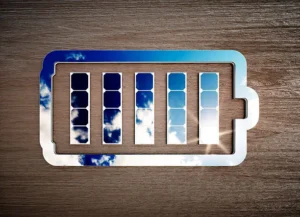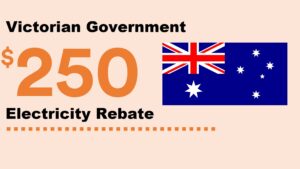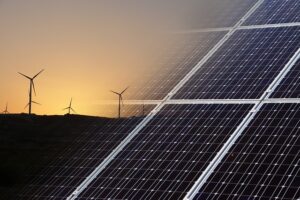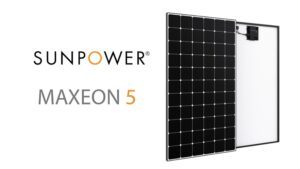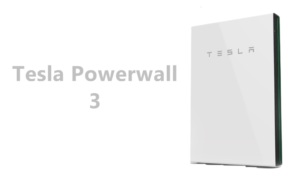
As the push towards renewable energy continues to grow, Australia has seen a marked shift towards solar power. The state of New South Wales (NSW) has long been at the forefront of encouraging this transition with the introduction of various incentives and rebates to make solar energy more accessible to homeowners. One of the most popular incentives is the NSW Solar Rebate, which helps reduce the upfront cost of installing solar panel systems. If you’re considering making the switch to solar power in 2025, this blog will walk you through everything you need to know about the NSW Solar Rebate 2025.
What is the NSW Solar Rebate?
The NSW Solar Rebate is a financial incentive designed to reduce the cost of installing solar panels in residential homes. Administered under the NSW Energy Savings Scheme (ESS), this rebate aims to make solar energy more affordable and accessible to homeowners. The rebate is available to individuals installing a new solar system, whether it’s a solar panel installation or a solar battery storage system, and helps significantly lower the initial cost.
The key idea behind the rebate is to help homeowners offset some of the upfront costs of solar installations by offering a rebate that can be redeemed at the time of installation. By reducing the cost of switching to solar, the NSW government aims to accelerate the adoption of clean energy and reduce the state’s overall carbon emissions.
How Does the NSW Solar Rebate Work in 2025?
The NSW Solar Rebate operates through the Small-scale Renewable Energy Scheme (SRES), a federal government initiative that provides small-scale technology certificates (STCs) for renewable energy systems. The STCs are a key element in determining the rebate amount you can claim. The number of certificates you can earn depends on the size and efficiency of the solar system you are installing.
The rebate amount will be calculated based on a solar credits system. This means that for every megawatt-hour (MWh) of electricity your solar system will generate, you will earn a corresponding number of credits that can be traded in exchange for a financial rebate.
Key Features of the NSW Solar Rebate in 2025
1. Eligibility Criteria
To be eligible for the NSW Solar Rebate 2025, you must meet certain requirements:
- Residential Property: The rebate is available to homeowners in NSW who own the property where the solar system is being installed.
- Solar System Size: The rebate applies to solar systems ranging from 1.5 kW to 100 kW in capacity.
- Grid Connection: The property must be connected to the electricity grid (off-grid solar systems are not eligible).
- No Existing Solar: The rebate is only available to homes that don’t already have an existing solar system installed.
- Clean Energy Council Accreditation: The installation must be carried out by a Clean Energy Council (CEC) accredited installer, ensuring the system is installed to meet Australian standards.
2. How the Rebate is Calculated
The amount of rebate you can receive depends on various factors:
- System Size: Larger systems tend to generate more energy and therefore earn more credits, leading to a higher rebate.
- Solar Credits: The number of small-scale technology certificates (STCs) generated by your system determines how much rebate you can claim. The amount of STCs a system can generate is based on factors like its capacity, location, and expected energy output.
- Location: Depending on where you live in NSW, your system may receive different STC allocations due to local sunlight exposure and expected generation.
- Installation Quality: The installation must meet Clean Energy Council standards, so it’s important to work with accredited installers.
In general, the rebate can range from $2,000 to $5,000 or more, depending on your system’s size and the number of STCs generated.
3. Battery Storage Rebates
In addition to rebates for solar panels, NSW also offers incentives for installing solar battery storage systems. If you choose to install a battery along with your solar panels, you may be eligible for additional financial assistance. Solar batteries allow you to store excess energy produced during the day and use it during the night or on cloudy days, increasing your energy independence.
Battery storage is becoming an increasingly popular option, as it helps homeowners make the most of their solar energy system. While not all battery systems are eligible for rebates, combining solar panels and battery storage in your installation may allow you to further reduce your energy costs and reliance on the grid.
4. Step-Down of the Rebate
It’s important to note that the NSW Solar Rebate is subject to a step-down process. The rebate amount decreases each year as the demand for solar systems increases. This step-down is designed to encourage early adoption of solar energy systems and to ensure that the cost of solar installation gradually becomes more competitive without government support.
The step-down schedule for the rebate is predetermined, meaning the sooner you apply, the higher the rebate you can receive. If you’re thinking about installing solar panels, it’s in your best interest to act sooner rather than later to take advantage of the maximum available rebate.
Benefits of the NSW Solar Rebate in 2025
1. Significant Reduction in Upfront Costs
One of the most compelling reasons to consider the NSW Solar Rebate 2025 is the significant reduction in the upfront cost of installing solar panels. With the rebate, you can save thousands of dollars on the cost of purchasing and installing a solar system. This reduction makes solar energy a more affordable and viable option for a larger number of homeowners.
2. Long-Term Savings on Energy Bills
By switching to solar energy, homeowners can dramatically reduce their electricity bills. Solar panels generate free electricity once installed, and with the addition of a battery storage system, you can rely on solar power 24/7. This can lead to savings of up to 50% or more on your electricity bills over time.
3. Increased Property Value
Homes with solar energy systems are often more valuable on the real estate market. Studies show that homes with solar panels can sell for up to 10% more than similar properties without solar installations. This increase in property value makes the solar investment even more appealing in the long run.
4. Environmental Benefits
The NSW Solar Rebate is part of the state’s broader efforts to reduce its carbon footprint and promote clean energy. By installing solar panels, you’re contributing to a more sustainable future by reducing your reliance on fossil fuels and decreasing greenhouse gas emissions.
How to Apply for the NSW Solar Rebate in 2025
To apply for the NSW Solar Rebate, follow these steps:
- Check Eligibility: Make sure you meet all the eligibility criteria outlined above.
- Get Quotes: Contact Clean Energy Council-accredited solar installers to obtain quotes for your solar system installation.
- Choose a System: Based on the quotes, select the solar system that best suits your home’s energy needs.
- Apply for the Rebate: Once you’ve chosen your system, your installer will handle the paperwork and submit your rebate application on your behalf.
- Installation: After the rebate is approved, your system will be installed by the accredited installer. The rebate will be applied to your system’s cost.
Final Thoughts
The NSW Solar Rebate is an excellent opportunity for homeowners looking to invest in solar energy in 2025. With significant upfront savings, long-term energy bill reductions, and environmental benefits, it’s a smart decision for many NSW residents.
The rebate’s step-down process means that the sooner you act, the greater the savings you’ll enjoy, so it’s wise to start planning your solar installation as early as possible. Be sure to consult with accredited installers to ensure you’re getting the best advice and the most up-to-date information on the rebate.
By taking advantage of the NSW Solar Rebate, you’re not just saving money—you’re also helping contribute to a more sustainable and energy-efficient future. Make 2025 the year you take control of your energy costs and switch to solar.

